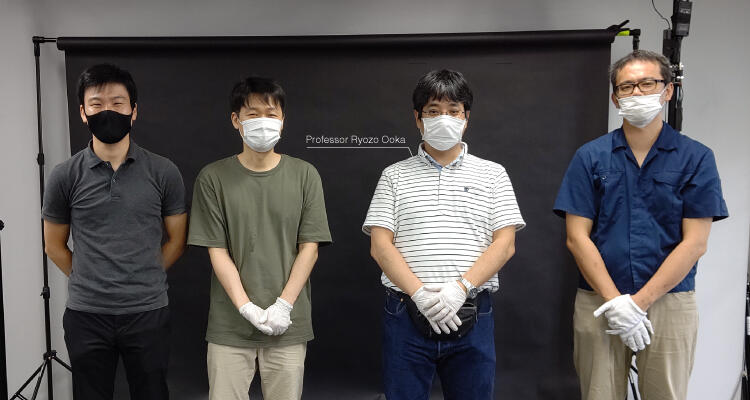
Global efforts to combat COVID-19 are proving to be extremely challenging. Epidemiologists, medical care experts, and public health policy makers are struggling to mitigate the spread of this disease that has infected approximately 20 million globally as of 11 August 2020, according to statistics compiled by John Hopkins University.
To-date a combination of washing hands and social distancing have been the two main pillars of public health measures to prevent the spread of the disease. Recently, however, an increasing number of scientists are concerned about the possibility of the SARS-CoV-2 coronavirus could be transmitted through the air in the form of micrometer sized droplets known as aerosols.
"I have recently launched a project to study the potential air borne spread of COVID-19," says Ryozo Ooka, a professor of the Institute of Industrial Science, The University of Tokyo (UTokyo-IIS). "The project is funded by UTokyo-IIS as part of the Institutes contribution to develop measures for mitigating the spread of COVID-19."
Visualizing aerosols and droplets originating from humans
The two fundamental questions being addressed Ooka and his colleagues at the UTokyo-IIS are what types of droplets are released during breathing, conversation, and coughing, and how far they travel through the air. So accurate analysis to resolve these issues necessitates the development of technology for visualizing the droplets emanating from a person's mouth.
In preliminary experiments Ooka's team constructed a visualization system consisting of strong white light sources and a high-speed camera (1000 frames per second) set up in a photography studio of UTokyo-IIS. The subject is illuminated by strong light from one side of their face and the camera is positioned on the opposite side to capture droplets emanating from the mouth during scenarios mimicking real-life including coughing, sneezing, and casual conversation.
Early findings and sustainable cities of the future
"Our experiments have shown that 20 micrometer sized droplets exhaled during simulated sneezing travel about 110 cm before falling to the ground," explains Ooka. "They are heavy, so they do not travel far. Notably, we observed greater exhalation of droplets after consuming fizzy drinks, such as carbonated fruit juice. We plan to use laser scattering for more in-depth analysis of the size distribution and range of microdroplets emitted. Also, we are conducting computer simulations to clarify the variation of droplet size with the time that they stay airborne." The computer simulations enable the researchers to design rooms with a wide range of parameters such as range of size of droplets, location for ventilation ducts, and the source of droplets, for example, whilst talking or sneezing.
The significance of this research is wide ranging. Ooka and his colleagues hope that their insights into the dynamics of these microdroplets will be used for formulating government policy and public healthcare guidelines for ventilating offices and houses to stop the spread of COVID-19. Furthermore, this research could be expanded into analyzing aerosols in the context of large gatherings such as cinema's and choral settings for indoor musical events.
"I have spent my professional life working on designing and analyzing buildings for building sustainable cities," says Ooka. "The COVID-19 crisis has energized and focused my thoughts to use my experience to design adaptive cities of the future that are robust enough to protect inhabitants from the spread of disease. A really challenging and worthwhile area of research."
Further information
Ooka Laboratory
http://venus.iis.u-tokyo.ac.jp/en/
Related links
UTokyo-IIS Bulletin Vol. 6 is now available
https://www.iis.u-tokyo.ac.jp/en/news/3372/
